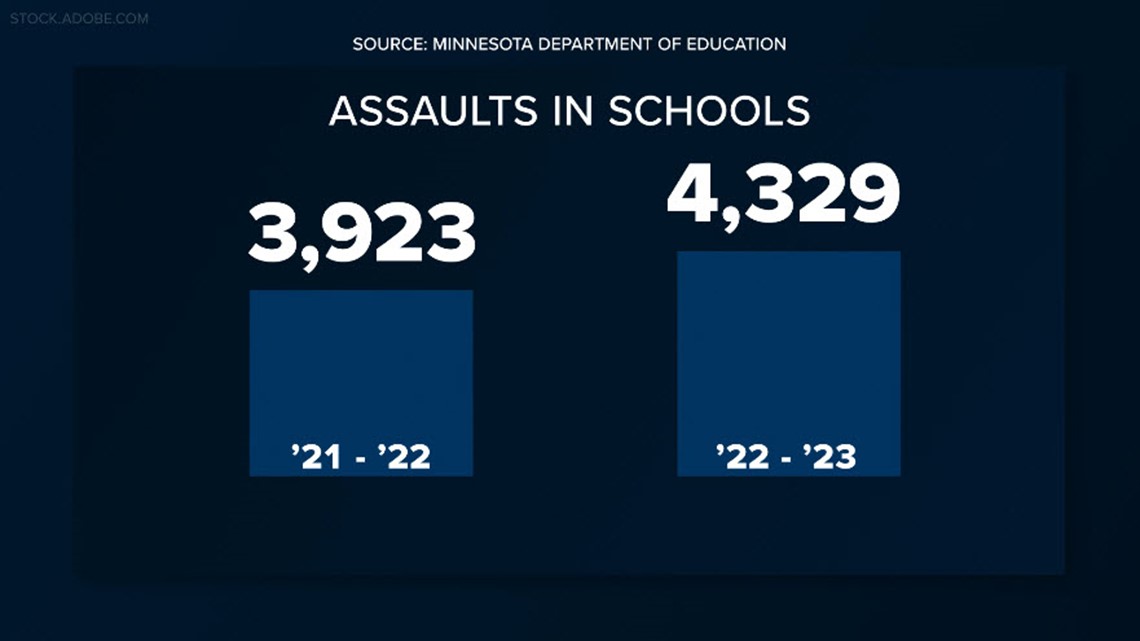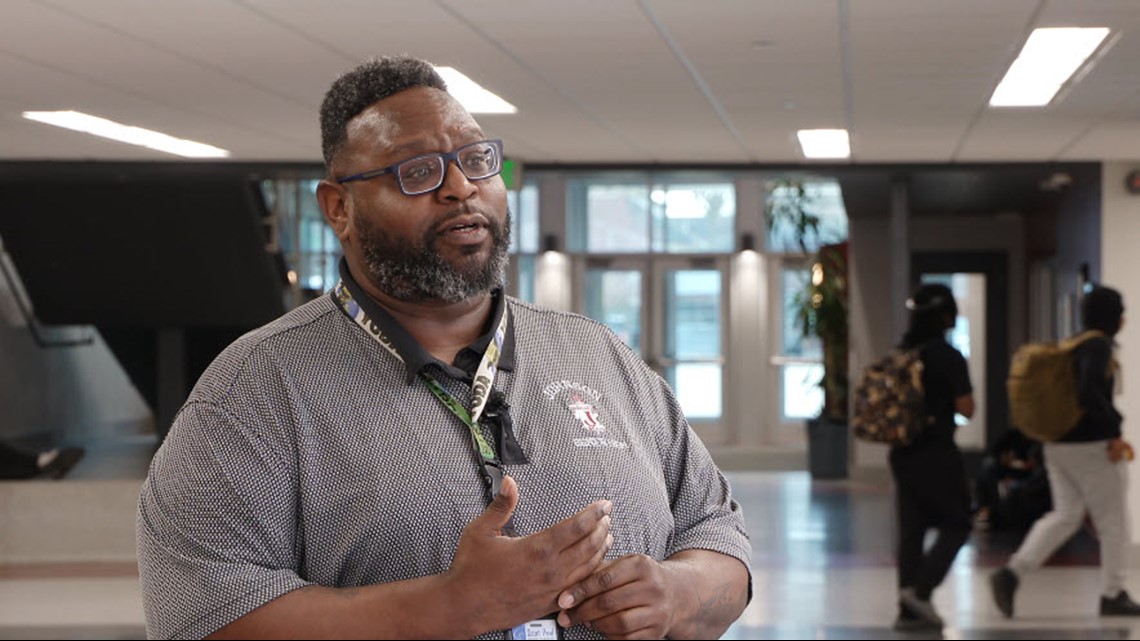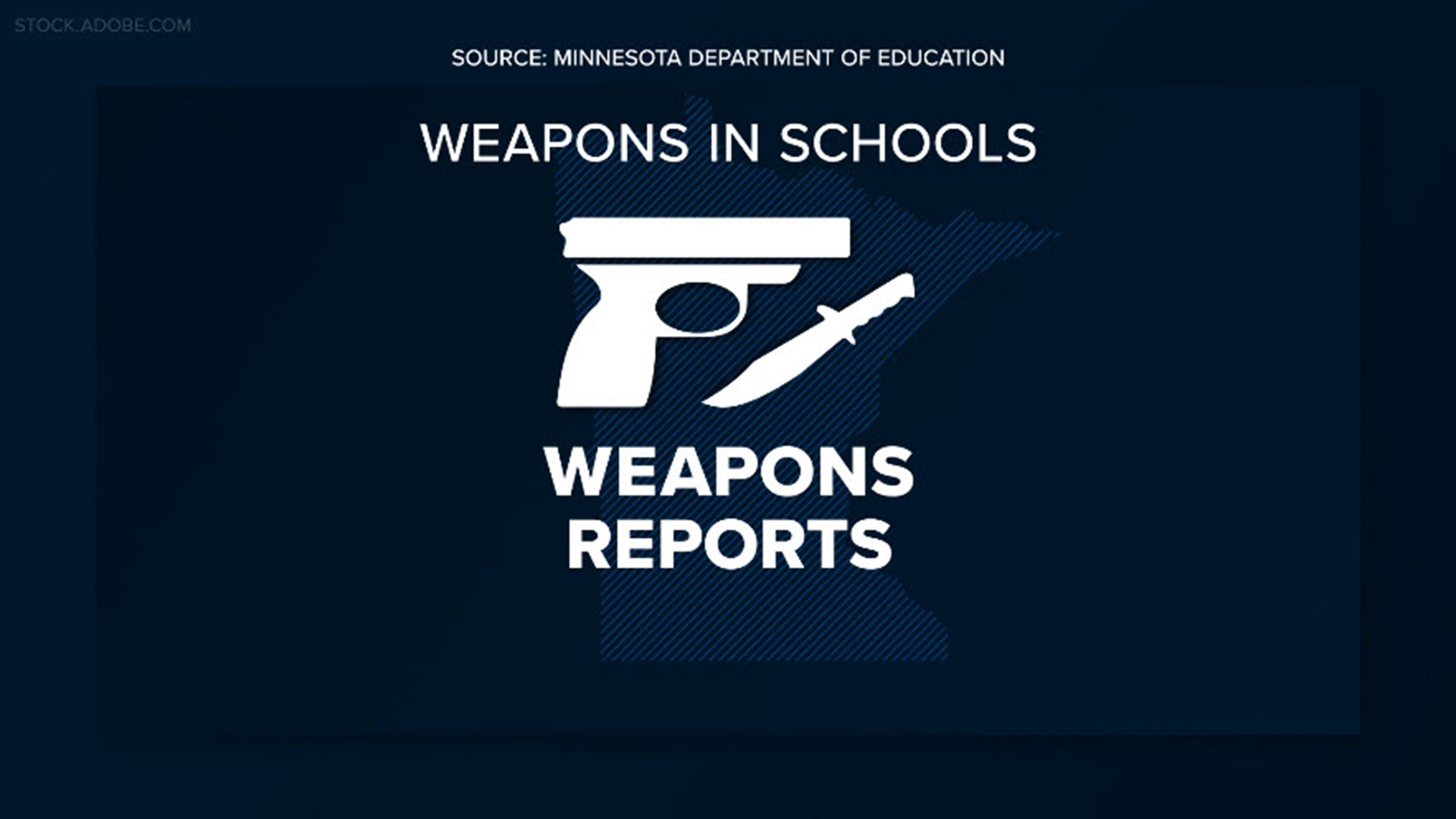ST PAUL, Minn. — Two full school years after the pandemic closed many schools, Minnesota educators are still confronting an increase in weapons and assaults on campus.
Through a public records request, KARE 11 obtained data collected by the Minnesota Department of Education which tracks disciplinary measures at each school – including incidents involving weapons and assaults.
After a post-pandemic spike, educators told KARE 11 last year they hoped to see weapons and assaults incidents decrease. The latest statewide numbers show there is still work to be done:
- Schools reported 1,750 incidents involving weapons in 2022-23, up from 1,577 the previous year.
- 4,329 assaults were reported in 2022-2023, up from 3,923 in 2021-22.
- Incidents involving handguns or long guns decreased to 60 in 2022-23 versus 70 in 2021-22
- Those 60 incidents involving guns took place at 45 Individual schools across urban, suburban and rural districts.


One bright spot in the data was Minneapolis Public Schools which reported a dramatic drop in gun reports. They fell from 30 to just eight.
The improvement in Minneapolis accounted for the year-to-year reduction statewide reduction – despite increased incidents elsewhere.
Search weapons reports at your school
Enter the name of your school – or your school district – in the dropdown menu to see a breakdown by the type of weapon reported during the last school year. Scroll to the right to find the number of each type of weapon found. The value on many rows will be zero – indicating there were no weapons of the sort reported at the school.
“Schools have always had tensions, problems, people get into fights, arguments, but when they’re armed those fights can escalate and they can become in some cases deadly,” said James Densley, a nationally known expert on school safety.
St. Paul experienced such an escalation in February 2023, when a Harding High School student was stabbed to death during a fight in a hallway.
It was one of 68 incidents that school year where a student in St. Paul Public Schools brought a weapon to school – including five guns.


“For me, it tells me that our children and our families are hurting right now,” said Jamil Payton who is principal at St. Paul Johnson High School.
He believes the statewide increase is linked to residual effects of the pandemic when children and families were cut off from services, the ease with which many school age children can access guns, and increased violence in the broader community.
“If I feel unsafe out on the streets, I may not feel as safe in the schools as I should,” Payton said.
Finding solutions
Payton and other experts KARE 11 contacted each said making schools safer requires both physical security and emotional connection.
“It’s about making kids feel seen and connected in their schools,” Densley said.
Carolyn Berger from the Minnesota School Counselors Association called for an “all of the above” approach.
“Sometimes schools crisis response plans might focus on what I would refer to as target hardening – things like bulletproof glass and cameras in schools,” she explained.
Those things are important she said, but so are having school counselors, school resource officers and support staff working together to connect with kids.


“I would argue an even more important part of that crisis plan would be to have comprehensive services that help students feel like school is a safe place for them, that school is a place where they belong and they are welcomed,” Berger said.
At Johnson High School, that includes three Student Support Liaison staffers who monitor campus hallways and entrances and check in with students.
Payton himself walks the hallways greeting students. Building relationships, he argues, is key to preventing violence.
“If something’s going on in school or even in the community, if they have those relationships with adults, they’ll be more apt to tell you,” he said.
Payton knows he can’t control what students face when they leave the building, but he wants them to know they are safe at Johnson High School.
“From 8:30 until 3 you have a safe space. You get fed, you have shelter and more importantly you have adults that care about you and care about your well-being,” he said.
Watch more KARE 11 Investigates:
Watch all of the latest stories from our award-winning investigative team in our special YouTube playlist:

